URL Slug, what it is and why it is essential for SEO + how to optimize it
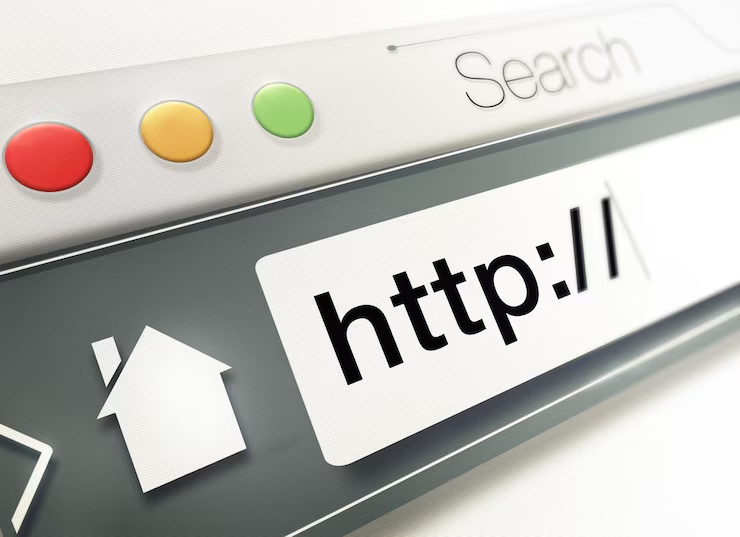
If your SEO efforts aren’t yielding results, the culprit could be poorly optimized URL slugs. They’re small yet mighty tools that can directly affect your rankings. Let’s explore their importance and learn actionable tips for creating SEO-friendly URL slugs that boost visibility. What is URL Slug A slug is a key component of any webpage URL. It’s the portion that identifies a unique page on your site and appears immediately after the domain name, following a slash. Think of it as the digital “name tag” for your pages, helping search engines and users understand what to expect on the page. URL slugs should be easy to read and accurately describe the content. They come after the directory and before any additional parameters or fragments, remaining dynamic for each unique page while other URL parts, like the domain name, stay consistent. An SEO-friendly URL is designed to provide clarity and context to both search engines and users, helping them understand what a page is about at a glance. These URLs are typically concise, descriptive, and include relevant keywords that reflect the content of the page. The URL slug is the backbone of an SEO-friendly URL. It serves as a clear signal to users and search engines, setting expectations about the page’s content. A good slug is short, easy to read, and provides a precise indication of what visitors will find when they click through. By optimizing your URL slugs, you create pathways that enhance visibility and improve user experience. Why Is a URL Slug Important for SEO? URL slugs may not directly impact rankings, but they significantly influence user behavior and overall experience. A well-crafted slug signals relevance in the search engine results page (SERP) snippet, helping users decide whether your page matches their search intent. Messy, unclear slugs can confuse visitors and make your site seem less trustworthy. Conversely, a clean, descriptive slug builds trust and encourages clicks. Including target keywords in your slug can subtly enhance relevance, even if it’s a lightweight ranking factor, as noted by Google’s John Mueller. In essence, while URL slugs may not dominate search rankings, they bridge user experience and SEO. Crafting user-focused slugs improves navigation, builds confidence, and could boost click-through rates—making them a critical, though understated, part of an effective SEO strategy. Optimizing URL Slug Make them readable. It’s crucial that URL slugs are easy to read and comprehend because they should immediately convey the content of the page. This entails avoiding superfluous characters like numbers or symbols and keeping it brief and direct. A URL slug like contact, for instance, makes it obvious that this is the page to visit in order to find contact details. This is not only simple to read, but it also has the added advantage of being simple to remember, allowing users to return to it at a later time. Keep it brief. It is impossible to have the ideal slug length. Although there are some rules to follow, there is no set amount of characters you should utilize. In general, shorter is preferable. Short URLs are preferred by Google, and if two pages have the same metrics, the shorter one will rank better. The tie-breaking criterion is URL length. Shorter URLs appear more appealing on search engine results pages (SERPs) and are easier for both visitors and search engines to grasp. But remember that descriptive URL slugs are still important. It doesn’t have to be the full length of the title, but it shouldn’t be so brief that the searcher can’t understand the purpose of the page. As previously said, concentrate on choosing keywords that accurately represent the content of the website. It is also possible to abbreviate the slug without sacrificing context by eliminating superfluous stop-words such as a, and, or the. This aids in readability as well. Remove dates and numerals to make it future-proof. It becomes challenging to reuse the page later if you wish to update the content because URL slugs contain numbers and dates. A slug like /10-SEO-tips-in-2016/, for instance, restricts the page’s content to those predetermined characteristics. You will either need to utilize a redirect to a more recent version of the page or allow the material to appear out of date if you wish to add more SEO tips, such as 23 tips for 2022, or if you want to make it more current, such as SEO recommendations for 2022. In any case, it’s preferable to stay away from numbers and dates because it’s not the best scenario. Use just lowercase letters. It is usual practice to use only lower-case URL slugs to prevent duplicate content concerns and 404 errors because everything after the domain can be case-sensitive. Making it as simple as possible for users to change URLs in their browser’s address bar will help you reduce the likelihood that people will create inaccurate connections to your pages. Use hyphens. For clear, legible URL slugs, use hyphens (-) to separate words. Hyphens are an exception and have established standard practice in this specific use-case, even if you should limit the use of other characters and symbols. Additionally, Google suggests using this punctuation. Resources for Improving Your URL Slugs You can identify problems with your URL slugs and optimize them with the following three tools: Yoast SEO Yoast SEO is a well-known WordPress plugin that aids with search engine optimization. It offers modification and optimization options for URL slugs right in the post editor. Thus, there is no need for you to code. This is a really simple method to make sure your URL slugs are optimized from the time you press publish if your website is WordPress-powered. However, you can utilize the tool for your Shopify website as well. Semrush The Site Audit tool from Semrush examines the functionality and health of your website. Additionally, it examines how well your URL slugs are optimized as part of its assessment. Semrush checks your website for problems such as: An excessively lengthy URL, Incorrect formats for the URL
What Is Retargeting? and Why You Need It
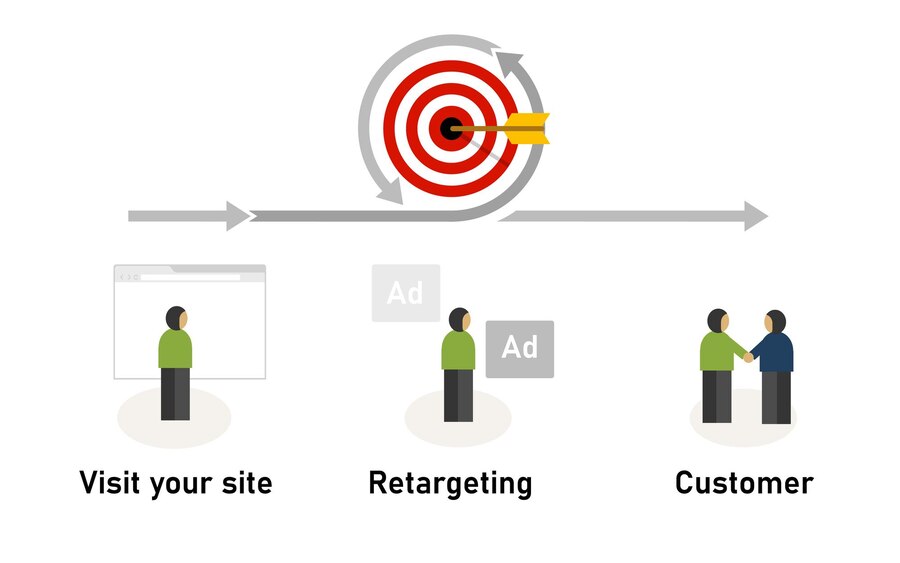
Retargeting is essential for capturing valuable leads, most of your target audience isn’t ready to buy — 90% lack interest, need, or motivation. Only 3% are actively purchasing, while 7% are exploring options and can be re-engaged with targeted ads. Considering that 97% of website visitors never return. Retargeting (or remarketing in Google Ads) involves showing ads to users who’ve interacted with your website, helping you attract qualified customers. Marketers avoid retargeting due to its perceived complexity but retargeting is crucial for your company because it draws in your best clients. Dgazelle can assist you in launching your retargeting campaign and utilizing sophisticated remarketing strategies to increase your paid channel revenue. What is Retargeting You’ve likely encountered retargeting before — for example, after viewing a product on an e-commerce site, you might notice ads for that product on other websites. This isn’t coincidence; it’s an effective marketing tactic. Retargeting is a digital marketing strategy that re-engages users who have visited your website but haven’t completed the desired action, like making a purchase. It works by displaying personalized ads to these users on other platforms or websites they visit, encouraging them to return. Unlike traditional ads targeting unfamiliar audiences, retargeting focuses on people already familiar with your brand, increasing the likelihood of conversion. Types of Retargeting Retargeting strategies vary based on user interactions and platforms. Here are the key types: Why Retargeting Works Most visitors don’t convert on their first site visit—only 2% make a purchase initially. Retargeting helps re-engage the remaining 98%, reminding them of your products or services. By bringing previous visitors back, retargeting increases conversion opportunities and boosts brand awareness. It keeps your business top of mind, ensuring potential customers don’t forget you. Even if they don’t convert immediately, familiarity with your brand grows. When it’s time to buy, these prospects are more likely to choose your business over competitors, giving you an edge in their decision-making process. How to Effectively Retarget Audience Retargeting is a powerful way to re-engage potential customers, and platforms like Google Ads and Facebook Ads make it accessible. Google Ads uses the term “remarketing,” which means the same thing. 2. Once the technical setup is complete, and you have segmented your audience by actions like page visits or time spent on your site. Create personalized ads with tailored messaging and visuals that resonate with each group. Launch your campaigns by selecting objectives like “Display” or “Search” in Google Ads, or by targeting custom audiences in Facebook Ads. 3. Monitor campaign performance using metrics like click-through rates (CTR), conversion rates, and return on ad spend (ROAS). Tools like Google Analytics 4 (GA4) and A/B testing will help you refine your strategy for better results. Sounding too technical? Dgazelle can streamline this process for you, from technical setup to campaign optimization, ensuring your retargeting efforts are both effective and efficient. Let us help you maximize your ROI with tailored strategies. Best Tools for Retargeting Choosing the right tools for retargeting depends on your audience, channels, and goals. Here are some top picks: Best Practices for Successful Retargeting Common Retargeting Mistakes to Avoid Conclusion Retargeting is a vital tool in digital marketing, but it’s just one piece of the puzzle when it comes to optimizing your website for customer acquisition. To truly unlock your website’s potential, you need a comprehensive approach that includes diverse strategies and techniques. Sounding too technical? Dgazelle can streamline this process for you, from technical setup to campaign optimization, ensuring your retargeting efforts are both effective and efficient. Let us help you maximize your ROI with tailored strategies.
Content Gap Analysis: What Is It And How to Do One In 5 Steps

Any discrepancy between the content your audience desires and what is actually available on your website is known as a content gap. The practice of assessing a content topic to see if there are any chances to cover it more thoroughly is known as a content gap study. Identifying and fixing these gaps might help you generate greater results with your content strategy. Additionally, provide your audience more value. Content gap analysis is the process of identifying topics, keywords, and questions that your target audience is searching for, but your website doesn’t sufficiently cover. It involves analyzing your own content as well as your competitors’ to find opportunities to create new content or optimize existing pages to better meet searcher intent and outrank your rivals. Why conduct a content gap analysis? Identify unexplored keyword opportunitiesYou can find keywords that your rivals are ranking for but you aren’t by using content gap analysis. You may increase your organic reach and attract more qualified visitors to your website by seeing these chances and producing content that is specifically tailored to rank for them. Determine the content of competitors’ weaknesses.Every piece of content is not flawless. In addition to highlighting your competitors’ strengths, content gap analysis highlights areas in which their material is lacking. These results can be used to produce more thorough, worthwhile content that surpasses that of your rivals and better meets the needs of your intended audience. Help with prioritizing and content planningChoosing what to create next can be overwhelming due to the limitless choices for content. A data-driven methodology for ranking content production according to the subjects and keywords with the highest potential for organic traffic and conversions is offered by content gap analysis. Boost your niche’s topical authorityWebsites that exhibit knowledge and authority on a certain subject are given preference by Google. You may increase your site’s topical authority and raise your chances of ranking for related keywords by systematically addressing content gaps and producing in-depth materials on important subjects in your niche. Content gap types Typical content gaps consist of: Topic Gaps Topic gaps take a broad view. This occurs when your material falls short in covering general topics or themes. For instance, content on meal planning, meal prep, repurposing leftovers, and item substitution could be produced by a creative who specializes in learning how to cook on a budget. One thing she hasn’t covered? discounts and coupons. Coupons are the “topic gap” in this case. keywords Gaps Topic gaps inevitably give way to keyword gaps, which happen when your material doesn’t address the terms that prospective buyers use when searching online. Reduced web traffic and, eventually, fewer individuals in your sales and marketing funnels are the results of this disparity. The course teacher, who has now recognized couponing as a significant topic gap, can start looking for keywords to incorporate into her SEO plan by using the previous example. “How to find local coupons in New York,” “how to stack coupons at Target,” “couponing for beginners,” and “what are the best websites for coupons?” are some examples of keywords she may use. Media GapA lack of diversity in the forms of content is referred to as media gap. Text, images, videos, and audio are examples of content types. Since content marketing is a massive and expensive endeavor, organizations frequently concentrate all of their meager resources on just one kind. Regretfully, this may result in a sizable percentage of your clients becoming dissatisfied. While some customers prefer podcasts and audiobooks, others prefer written communication, including blog posts and emails. You’re essentially telling the rest of your audience to keep looking elsewhere for the media type they require if you only concentrate on one or two types. Format GapThe way your content is presented is referred to as format gaps. Email newsletters, SMS text messages, blog entries, e-books, how-to manuals, and templates are a few examples of text content. Format gaps have the same potential to exclude some segments of your audience as media gaps do. For instance, not everyone is interested in reading an email newsletter. An ebook or in-depth blog post is preferred by some. Six Steps to Conducting Content Gap Analysis Finding methods to figure out what kind of contents your audience wants but you aren’t creating right now is essential to performing a content gap analysis correctly. Without a sense of direction, this can be a daunting task. For this reason, we divided the procedure into these six easily absorbed steps. Step 1: Understanding the Buyer’s Journey The buyer’s journey has four stages: Awareness, Consideration, Decision, and Success. Mapping the journey ensures targeted content, effective keywords, and fills content gaps, boosting engagement and sales. Step 2: Conduct Market and keyword research. You can start researching your target market and the terms your audience uses in pertinent searches once you have a firm grasp of your customer journey. There are two steps in this process: Customer research, competitive analysis, and industry trends are all considered forms of market research. Understanding your target market’s demographics and behaviors, the tactics used by your rivals, and the most recent developments and trends in your target market are all part of your objective. You can use the following tools to aid in your market research: Google Trends, Statista, Pew Research Center, or Semrush. Keyword research is the process of identifying specific search terms your target audience uses during their customer journey, especially during the awareness, consideration, and interest stages. Tools that can help with keyword research include: Semrush, Answer the Public , Ahrefs, Surfer SEO or Moz Keep in mind that keywords aren’t limited to search engines like Google and Bing as you continue your keyword research. Additionally, search engines like YouTube, Pinterest, and Instagram employ keywords. Step 3: Audit your existing content A content gap analysis isn’t just about generating ideas for new content; it’s also about auditing your existing library of content to see if anything’s missing. Also, it’s normal for content to become outdated and irrelevant after a
Content Promotion: 3 Ways to Easily Distribute Content

Almost as crucial as producing content is distributing it. Publishing it on your own website is frequently the first step in this process, but it won’t have the most impact. Even massively popular companies like Red Bull and The New York Times employ a wide range of methods for content promotion. Putting oneself in the position of your target audience is crucial to creating an effective distribution strategy for your content. Which channels do they like to use to view and consume your material, and where are they active? For this, use your buyer personas! Distribute ideas, not articles Getting people to click on a URL is the definition of content promotion, according to the majority of individuals. But Promotion is more than merely persuading visitors to click on a link; if that restriction is lifted, a plethora of different promotion strategies become available. We could do actions that aren’t often related to promoting content: Participate at conferences, post freely on social media, create or appear on podcasts, and more. An article is just a container. When we produce material, we typically do so to further a bigger objective: sharing an value. examining content promotion from this perspective gives us two additional insights: Your idea must be valuable. You can’t just write a piece and hope it gets shared. Your work must be creative and distinctive if you want people to read it, share it on social media, in newsletters, or in communities, and get links. Ways to promote your content Getting people to see your idea means acquiring an audience. There are really only three ways to do this Personal audience: own your reach Promoting your content effectively starts with building an audience—people who actively choose to follow you through newsletters, podcasts, or social media. While social platforms like X, LinkedIn, and Instagram are excellent for reaching your target audience, they come with limitations. Algorithm changes or policy violations can suppress your content or shut down your account altogether. This is why focusing on building an email list is crucial. Unlike social media, your email list is entirely yours, allowing you to reach your audience anytime, as long as you have their permission. To encourage subscriptions, offer a compelling incentive, such as an eBook, email course, or exclusive content. Even simple trust or the promise of more valuable ideas can motivate people to sign up. Pair your email strategy with a robust website. Use landing pages tailored to downloads or infographics to funnel visitors into your email list. Together, your website and email list create a powerful, reliable foundation for distributing your content and engaging your audience. Leverage earned media: borrow audience from major platform One way to expand your reach is by borrowing an audience—finding platforms where your target audience already spends time, such as Google, YouTube, or other social media platform. By adhering to the platform’s rules and optimizing your content, you can get in front of people who don’t yet follow you. For instance, you could create SEO-optimized content to rank on search engines, share valuable insights in relevant subreddits, or publish engaging videos on YouTube. To rank well on search engines, focus on three key areas: Equally impactful is earned media—getting third parties to share or talk about your content. High-quality, shareable content is essential for this. Encourage employees to share your content, as their posts often outperform company pages on platforms like LinkedIn. Collaborating with industry influencers and guest bloggers can also amplify your reach. Their endorsements help build credibility while introducing your brand to wider audiences. Paid Media: Buying an Audience If you have the budget, paid media is a powerful way to reach a larger audience quickly. Platforms like Google Ads, Bing Ads, and social media channels (Facebook, Instagram, TikTok) allow you to target your audience with precision, segmenting by demographics, interests, and geography. Paid ads are especially effective for getting immediate feedback on your campaigns, enabling you to experiment and refine your approach in real-time. Native advertising has also gained traction, letting you promote content in an editorial format on external websites or content partners. For instance, you could use blogs, infographics, or videos to engage audiences seamlessly within their browsing experience. Case studies like Teledyne CARIS showcase how native content marketing can successfully drive engagement. However, ads are not infinitely scalable, especially when used to promote content where ROI isn’t immediate. To maximize your investment, pair paid campaigns with strategies to build an email list or strengthen your SEO foundation. This ensures the traffic you’ve paid for continues to serve you over the long term. Conclusion Content promotion isn’t about pushing an article into the void, hoping for engagement. Your article is merely a vessel; your end goal is to share a valuable idea with the world. Thinking of promotion from that perspective will open up your world in terms of potential distribution channels. You no longer have to rely on the XX promotion tactics you find online, all dedicated to securing that one click. Whether you’re leaning towards an agency for its comprehensive services or a freelancer for their specialized skills, we are here to help.
Freelancer vs. Agency: Which Web Design Solution Fits Your Small Business?

Dealing with arrays of problems when running a business is part of the job. Among other things, you need to engage with your teammates, stay revenue-focused, and come up with new ideas. There are a number of things to think about, but one of the most crucial ones is to make sure you’re working with professionals in digital marketing. However, how can you choose between working as a freelancer and an agency? Crucial elements include the professionals you select and the manner you manage your business. To accomplish the same task, you can either hire a freelancer or collaborate with a reputable digital agency like Dgazelle Digital. Each has advantages and disadvantages, and in the end, you should choose the one that benefits you and your company the most. To assist you in making the best decision, we have compiled this thorough information. Why Is The Decision Between Freelancers vs. Agencies Such A Hard Choice? Because there are simply too many choices. You can find millions of results by just searching for “freelancer” or “agency” on Google. There are far too many to sort. Employing marketing experts, whether they work for an agency or as independent contractors, won’t be a uniform choice for every company. Among other things, you will need to think about your target market, sales cycle, your particular business niche, and your established brand voice. The Basics of Freelancer vs. Agency Before deciding if an agency or freelancer is the greatest fit for your company, let’s clarify what each is. A freelancer is a self-employed marketing consultant with a clientele who works part-time. They frequently have extensive backgrounds in a range of domains, such as social media, SEO, ad creation, website development, strategy development, design, and content and copywriting. A digital agency is a bigger group of marketing experts within a more uniform organizational framework. An agency will have a team with a broad range of expertise in several industries and in every aspect of marketing, as these teams frequently comprise professionals with specific skills. To create thorough strategy plans or work on particular client tasks, the firm makes use of the experience of its staff. It won’t be easy to decide between an agency and a freelancer because different businesses will have different needs. Both will actively market their features and advantages in an effort to get your attention. To make an informed choice, you must weigh various factors before selecting the best one for your company. Knowledge and Experience Agency Advantages: Hiring a digital agency will provide you with a group of seasoned professionals with a broad range of experience. They will all understand what works best for your company, so you won’t need to explain your idea to them.Disadvantage: You might not be able to choose your coworkers. A personnel from the digital agency’s roster will be assigned to your business. FreelancerAdvantage: Choose a freelancer who is excellent at fulfilling your particular needs. You can get assistance from generalists or freelancers with specialized knowledge.Disadvantage: It will be challenging to find a single person with the variety of abilities you require, and you will probably need to hire multiple freelancers. Working together with several independent contractors might take a lot of time and Services AgencyAdvantages of working with a digital agency include regular review meetings to gauge progress and your level of satisfaction with their work, as well as a contact and support system to make sure your needs are being met. Generally speaking, agencies have clear procedures for accomplishing objectives and completing tasks.Disadvantage: Depending on their pay, an agency may have certain guidelines for the quality of services they must offer. This can make it challenging to add significant last-minute initiatives to the pipeline or to swiftly change course when necessary. FreelancerAdvantage: Since freelancers work for themselves, their reputation is very important to their success. They will most likely provide exceptional help and ensure that the requirements you set are fulfilled. Since the freelancer wants you to recommend them to other business owners, it is in their best interest to aim for success.Disadvantage: Freelancers are known to occasionally be hard to get in touch with and to abruptly stop working. Additionally, a lot of independent contractors insist on not working under contracts, which could put you in a tight spot if they fail to do the work they promised. Prioritization AgencyAdvantage: Agencies can devote more resources to programs that are of utmost importance. They can handle a greater number of more challenging jobs because they have more employees and committed experts.Disadvantage: Setting priorities for work frequently has a price, and bigger, more lucrative clients will be given priority. FreelancerAdvantage: Freelancers can dedicate more time to your projects because they usually have less assignments than a larger organization. They might decline other clients in order to concentrate on your job if the project is big enough.Disadvantage: One person may take longer to finish tasks due to a lack of resources. When freelancers take on more clients and tasks than they can efficiently finish, they run the risk of taking on more than they can handle. Flexibility and Quickness AgencyAdvantage: You will have greater clarity about the task that an agency performs thanks to their clearly defined partnership structure, and you can dependably plan your business around their capacity to produce thanks to the distribution of hours and resources.Disadvantage: Unexpected projects or problems may interfere with planned schedules, and the agency’s availability may be restricted to regular business hours due to the same structure. FreelancerAdvantage: Since freelancers are more adaptable and can take on urgent projects with little notice or outside of typical working hours, they frequently choose this type of work over traditional business hours.Disadvantage: They frequently charge more for work done on the weekends or in the evenings. Due of their unconventional work patterns, it may also be challenging to set up meetings or get prompt answers to inquiries. Cost AgencyAdvantages: The majority of companies offer well-organized plans that specify exactly what you
Ethical Marketing For Business: Definition, Principles, & Examples
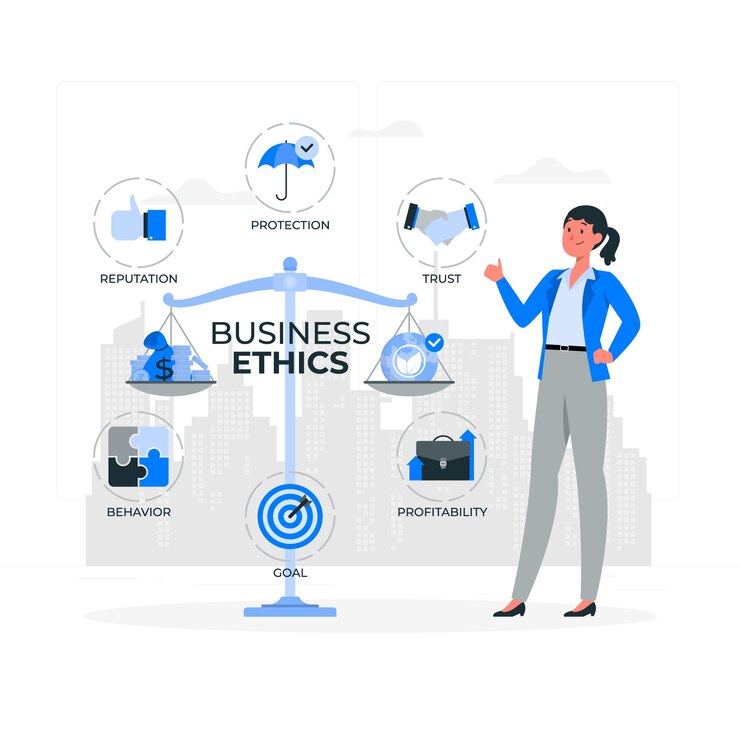
Promoting a brand, business, service, or product in a way that is consistent with your beliefs and values is known as ethical marketing. Businesses must expose their operations and goods in order to practice ethical marketing. They can’t use misleading marketing. Ethical marketing increases customer trust by being truthful and open. Because they won’t be mistreated or deceived, customers purchase with confidence. Honesty, morality, and culturally and socially conscious marketing are encouraged. Consumers receive honest and equitable treatment. Definition of Ethical Marketing A marketing approach that prioritizes ethics and ideals over promotional tactics is known as ethical marketing. By considering what is appropriate and inappropriate for the target audiences or society, it directs marketing strategies. Fairness, honesty, accountability, and confidence in a company’s marketing policies are all encouraged by every facet of marketing ethics. By using ethical marketing, a business benefits customers by supporting social and environmental causes. It builds enduring brand-customer partnerships based on common values and objectives. There are no strict rules when it comes to ethical marketing. The guidelines need to help businesses or brands assess the newest marketing tactics. Importance of Ethical Marketing Since it shields a business from legal issues and damages its reputation, marketing ethics are crucial. It serves as the cornerstone for customer credibility and trust, increasing brand loyalty and guaranteeing a positive reputation. Businesses that adopt ethical practices, such advocating for energy conservation or fair-trade goods, benefit both society and the environment and set themselves up for long-term success and profitability. However, ignoring ethics can have detrimental effects, such as losing clients, facing legal action, and incurring financial fines. Every mistake can go viral in today’s connected digital world, drawing widespread criticism and possibly causing long-term harm to a company’s reputation. The Principles of Ethical Marketing? In the context of marketing, numerous fundamental ethical principles come into play. These core principles regulate how organizations connect customers, establish pricing, express their values, and take responsibility. Developing Ethical Marketing Strategy Providing resources for assessing marketing tactics is known as ethical marketing. It begins with a thorough examination of the company, its clients, and the industry in which it operates. Since ethics are nebulous, a business must determine which aspects of advertising are morally acceptable. The company’s marketing campaign delivery strategy must be agreed upon by marketing experts. The business must concentrate on stating truthful statements or falsely disparaging rivals, etc. The advertisement’s capacity to influence customers must be balanced with its truth. Ethical marketing may draw attention to how a company’s reputation has improved. It can establish a solid rapport with customers. For instance, businesses in the cosmetics sector that embody ethical marketing must make a commitment to their employees, do away with animal experimentation, maximize the use of organic products, refrain from objectifying women or encouraging color biases, etc. Brands should take the following four actions when creating ethical marketing strategies: Consumer Behavior and Marketing Ethics Any brand or organization’s integrity and survival depend on its ability to comprehend and address marketing ethics in consumer behavior. Fundamentally, ethical marketing places a strong emphasis on accountability, fairness, and transparency in all forms of advertising and consumer relations. Promoting ethical marketing strategies aids in establishing long-term client relationships and trust. Conclusion On a concluding note, it is clear that ethical marketing effectively optimizes brand reputation and increases employee and customer retention. It motivates employees to make a difference or apply to social causes. Plus, customers trust a brand that follows marketing and business ethics in its campaigns and channelization. An ethical company promotes responsible marketing, offers a sense of purpose to workers, and adds value to society. Business should audit their current marketing strategy and check how it could be tweaked in line with the principles of ethical marketing. GET IN TOUCH Boost your brand reputation with ethical marketing strategies from Dgazelle. Build trust, drive impact, and grow your business the right way
7 Social Media Tips Every Small Business Needs To Scale Easily
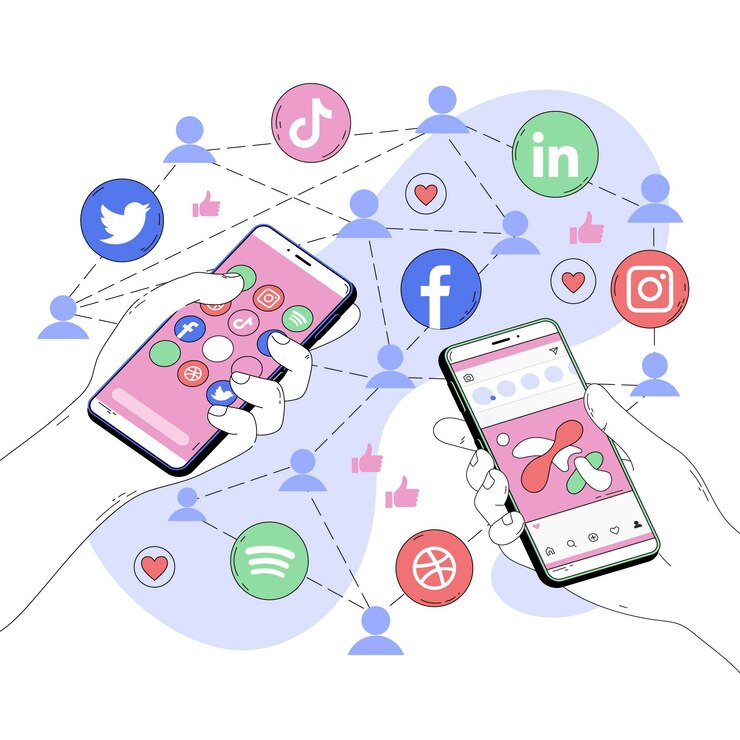
Its so essential to have an online presence on well-known social media platforms. However, simply posting static photographs sometimes or creating an idle account is insufficient. The average person uses social media for 147 minutes every day. That is more than two hours of time spent on content creation and consumption. To stand out in consumers’ feeds, brands hoping to get a portion of that attention must have a strong social media strategy. Discover how to market your company on social media in the sections that follow, along with advice on how to maximize your marketing efforts and examples from prosperous firms. Importance of social media to small businesses? The main advantage of social media is that it’s an inexpensive way to raise brand exposure. Naturally, you must devote time and resources to developing your content, but with a dependable phone and a few tools, you can produce high-quality content. Additionally, you may reach your target demographic with social media for a fraction of the price of focused advertisements. Furthermore, social media enables you to: In the end, there isn’t much of a difference between how a small business and a mid- to large-sized firm use social media. You’re sharing, interacting, tracking, and optimizing in both situations. The main distinction is that an established brand might place more emphasis on development, whilst a small business is probably more concerned with growth. Social Media Tips for Small Business 1. Determine your social media audience Effective social media marketing requires an understanding of your target demographic. It entails investigating and characterizing your target audience’s demographics, hobbies, and habits. Knowing your target audience will help you create advertising, marketing, and content that appeals to them particularly. Higher interaction, improved conversion rates, and eventually greater success on social media platforms are the results of this. You can adjust your social approach to the people who are most important by determining your social audience. 2. Have social media marketing plan Creating a social media marketing plan before you begin will help you concentrate your efforts. Determine your brand’s social media marketing objectives first. These might consist of: This is a fantastic moment to define your target audience if you haven’t already. As much information as you can about your audience can help you determine which platforms they use, what kinds of material they interact with, and when they are most likely to be online. There are several approaches to find out more about your target audience: 3. Target the right channels It’s not necessary for your brand to be active on every social media network. In reality, you can be squandering your time in certain situations. For instance, Facebook is essential if you market to an older audience, but TikTok may be causing you confusion. These social media platforms are well-liked by e-commerce companies. 4. Be consistent. Being consistent is the best course of action for small businesses when they first start using social media. All too frequently, brands lose hope if they don’t see results after a few weeks. In actuality, social media growth can be sluggish, but like most things, you will see benefits if you stay consistent. This entails consistently publishing excellent content (at least once a week). There are several reasons why you do this. First, you want users to have a clear understanding of your brand when they visit your profile. Users will rapidly become disinterested and depart if your material is scant or nonexistent. For dispersed positions, the same holds true. Social media is a platform for storytelling. Users will understand your voice, what you have to offer, and what to expect from your website when you put consistency and coherence first. You’ll draw in your target audience in this way. 5. Diversify your content. There is a lot of space for creativity and experimentation on social media. All too frequently, brands identify a single effective tactic and follow it. The adage “If it ain’t broke, don’t fix it” has a lot of truth to it, yet social media is always changing. Due to changes in user behavior and the implementation of new features, what worked yesterday might not work today. In light of this, experiment with content types whenever you can. For example, you can only post videos on TikTok. On Facebook, on the other hand, you may post photographs, hold polls, go live, and more. social media report revealed that small businesses get the best ROI from creating educational and relatable content. Meanwhile, mid-size and large businesses report better results with funny and interactive content. The reason for this is that bigger businesses already have a loyal following and are aware of what appeals to them. They are able to create innovative material and conduct interactive polls because of this. However, small firms still have a lot to prove. What’s the simplest approach for them to gain more followers and give value to their audience? Provide informational and/or emotionally compelling stuff. That being said, small businesses shouldn’t limit themselves to just these two kinds of content. In order to determine what their audience prefers, they should actually try out all of the content. This can be a good place to start, though. 6. Quality over quantity This holds true for both the platforms you post on and the content you post. Although posting frequently on social media is advised from a content standpoint, there is a catch. Your posts should all be valuable. If it doesn’t fit that description, think about using an other tactic, such distributing user-generated content (UGC) or reposting brand-related information from a non-competitor. In fact, according to 33% of small business surveyed (those with 1–25 employees), using user-generated content (UGC) on social media yields the best return on investment. You might not have the time or resources to maintain an account on every social media site if your company is small. Concentrating on one to three platforms that have the demographics of your target audience and working from there is far more
Discover How Positive Reviews Can Triple Your Website Traffic and Revenue
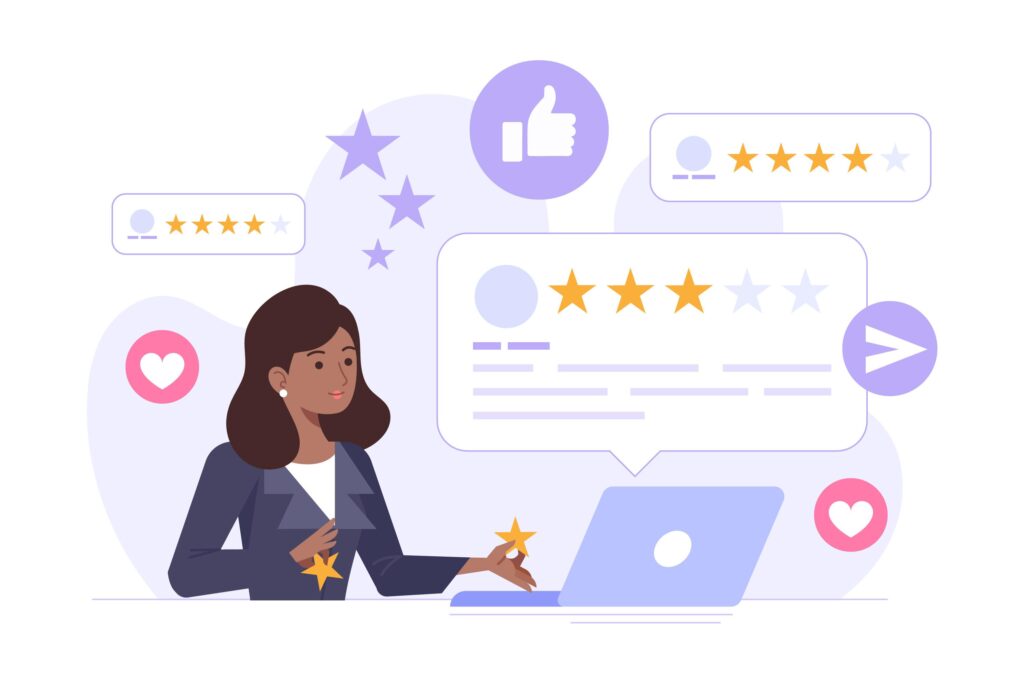
Positive reviews are the goal of any business owner, yet many fail to take use of this feedback. When handled properly, positive reviews may be a very effective tool for increasing the growth of your business.Positive reviews are more than just flattering statements; they are essential to establishing your business credibility and visibility on the internet. Millions of Nigerians will tell you that they like to shop so effort. Naturally, you’ll find yourself in discussions where individuals discuss where they’ve purchased certain items or which online retailers are the greatest. Therefore, having excellent items is no longer sufficient. In addition to having reviews, you should post them publicly for everyone to see. This post will discuss the value of customer reviews, how to get them from your clients, and how using them to increase sales. The Importance of Customer Reviews Since the majority of people shop online and rely on these ratings when making judgments about what to buy, customer reviews are now essential to businesses. It is impossible to overestimate the impact of consumer feedback because it is a potent instrument for your brand. Why should you gather reviews from customers? Best Practices for Collecting Customer Reviews You might find this difficult as a business owner for a few reasons. We know Nigerians, so it’s possible that your consumers are simply stubborn or in too much of a rush. Or perhaps you haven’t made the process simple for them. Here are a few strategies that will work to persuade a consumer to write a positive review for you. Best platforms for customer reviews and how to display them It is now evident that displaying positive evaluations for your company is crucial. You can craft an engaging story that appeals to potential clients and motivates them to interact with your brand by carefully showcasing satisfying customer experiences. Let’s examine these three crucial actions you may do to effectively display favorable evaluations and enhance the perception of your company. To maximize the impact of customer reviews, the best platforms must be chosen for their display. Various platforms serve different functions in the customer journey and cater to different audiences. The top four systems for collecting and displaying customer evaluations are shown below, along with instances of how companies have effectively used them: Google My Business: Google My Business evaluations can greatly increase your company’s visibility and reputation as it serves as a major touchpoint for people conducting online searches. For example, by placing favourable evaluations directly in the search results, a neighbourhood café might draw more customers and establish itself as a favourite among coffee drinkers. Instagram: Leveraging Instagram for sharing customer reviews offers a visual and engaging way to highlight positive experiences. For example, a clothing brand can share customer photos wearing their products, coupled with positive captions or stories, turning satisfied customers into brand ambassadors. Yelp: Well-known for influencing customer choices, Yelp evaluations have the power to increase foot traffic and foster confidence, particularly for nearby establishments, eateries, and service providers. Assume a salon wants to draw in new customers by showcasing its stellar Yelp ratings and reviews on its website or in promotional materials. TripAdvisor: TripAdvisor reviews are a great source of positive feedback for companies in the travel, tourist, and hospitality sectors. To attract tourists searching for a distinctive and well-regarded location to stay, a boutique hotel, for example, can showcase positive ratings on its website. Including reviews on your company website Apart from the aforementioned venues, your own website is an excellent venue for showcasing online reviews. Potential clients can be greatly influenced by including a reviews section or a special testimonials page. Online merchants frequently include reviews on product sites so that customers may evaluate the efficacy and quality of their products directly from other users. For instance, an eCommerce website can show product reviews on individual product pages, giving customers instant social proof. Furthermore, establishing a specific testimonials page provides a more thorough examination of client satisfaction by presenting more thorough comments or success stories. Even in less expected places, like the checkout page, brief customer quotes can reassure buyers about their decisions. This approach not only enriches the user experience but also strengthens the trust in your brand and services, encouraging more conversions and engagement from site visitors. Conclusion For companies trying to boost conversion rates, improve their internet visibility, and establish credibility, positive reviews are crucial. Additionally, you must put a series of tactics into place to motivate consumers to write favorable product evaluations. Utilize the advantages of both channels by incorporating favorable Instagram reviews into your company website using tools like Spotlight. More than just a marketing tactic, promoting and showcasing favorable reviews is a means of building a relationship with prospective clients and establishing a reliable brand image. Put these strategies into action to maximize the impact of favorable ratings and advance your company. Turn positive reviews into powerful growth tools with Dgazelle’s expert digital strategies. Let us help you triple your website traffic and revenue.
How to Increase Webpage Speed: 10 Essential Hacks
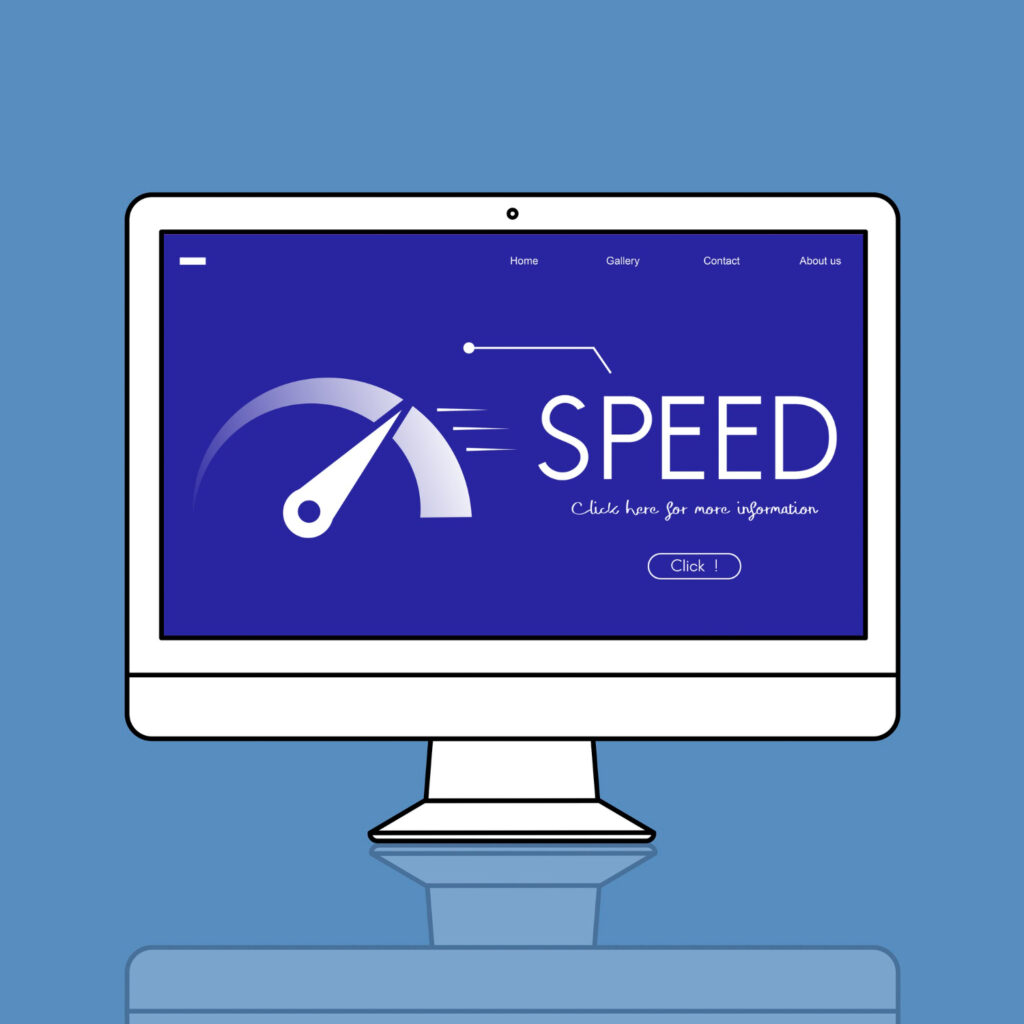
Optimizing your website to load and display more quickly is known as webpage speed optimization. A number of variables, such as the kind of material on the website and user expectations, can affect the “optimal” speed of a website. Nonetheless, it is generally advised that a web page load in two to six seconds as a general rule. Why is webpage speed important? The demand for quick websites is growing as surfing habits change and attention spans get shorter. Here’s why it’s so important to optimize the loading time of your website: How webpage speed is measured Accurately measuring a webpage’s speed is the first step in successful optimization. The following are some methods for methodically testing and evaluating the functionality of your website: These tools give you insights into how different factors impact your overall speed in addition to helping you understand how quickly consumers can load your website. You can make sure that your website provides all users with a quick, effective, and pleasurable experience by continuously monitoring and improving its performance. Best Practices to improve webpage speed Enhancing your website’s speed is crucial for providing a better user experience and improving your site’s SEO – but how do you even start? Here are some best practices that can significantly cut down your load times and boost performance. Optimize Media Although they are among the simplest to optimize for speed gains, images frequently account for the largest portion of a page’s overall size. Before you post an image to your website, start by making it smaller. Load times can be unduly increased by uploading larger-than-necessary photos and subsequently reducing their size. Another option is to attempt compressing them using programs like TinyPNG, Adobe Photoshop, or online compressors that lower file sizes without sacrificing quality. Lastly, be sure to select the appropriate format. For instance, PNG works well for photographs that need transparency, whereas JPEG is better for pictures with a lot of color. Compared to JPEG and PNG, WebP is a more recent format that offers better quality outcomes with fewer file sizes. Optimize fonts Although web fonts are necessary for contemporary web design, improper use of them can cause your site to load more slowly. You may prevent fonts from slowing down your website’s speed by optimizing their loading. Selecting the appropriate format is the best course of action in this situation. For web fonts, choose contemporary, effective formats like WOFF2, which offer superior compression and quicker load times. Font-display should also be used. With the use of this CSS feature, you may manage the way fonts appear while they load, perhaps preventing text from becoming invisible while loading (also known as Flash of Invisible Text, or FOIT). Make Javascript smaller. Although JavaScript is frequently essential for creating dynamic and useful websites, improper use of it can have a major negative effect on how quickly pages load. Without affecting the functionality of your code, minifying JavaScript entails removing any extraneous characters, including whitespace, newline characters, and comments. Make CSS smaller. Minification is a straightforward but powerful technique to improve the functionality of your website. It entails making the code more efficient through optimization. The following explains minification’s operation and significance: File sizes can be greatly decreased by eliminating extraneous characters, spaces, comments, and other components that the server doesn’t need to process the code. Because there is less data to send, this condensed version of your JavaScript or CSS loads considerably more quickly.The process of minifying your CSS and JavaScript files can be automated with a number of tools. For instance, developers wishing to incorporate minification into their workflow frequently choose CSSNano and UglifyJS. Render blocking assets JavaScript and CSS files known as render-blocking resources stop a page from being seen until they have finished loading. Although they are frequently essential resources, improper management of them might cause a considerable delay in page rendering. Techniques for managing resources that block rendering: Determine which CSS is essential and insert it straight into the HTML by inlining it. This aids in rendering the website layout prior to loading the full CSS file.Reduce unwanted CSS/JS: Tree shaking can get rid of unnecessary JavaScript code, which lowers file sizes, and tools like PurgeCSS or UnCSS can assist you in getting rid of unwanted CSS rules. Caching One technology that is essential to the transmission of content, particularly for websites with a worldwide audience, is caching. A material Delivery Network (CDN) makes sure that your material is always accessible to your users by keeping copies of your assets in several carefully chosen data centers. This close proximity improves the speed and responsiveness of your website by drastically cutting down on the amount of time it takes for data to go between the server and the user. Because traffic is offloaded to CDN servers, your origin server must process fewer requests, which lowers latency and server strain. This enhances your server’s scalability and stability while also speeding up the website for users. Steer clear of large DOM sizes. Your website may become noticeably slower if the Document Object Model (DOM) is too big. It may take longer for a page to load and render if the DOM is huge since there are more nodes for browsers to parse. By reducing the amount of superfluous nesting in your HTM, staying away from inline styles and superfluous scripts that might make your page appear larger, and use contemporary, effective CSS for layout and design, you can minimize the need for extra HTML components. Take advantage of CDN When it comes to speeding up the loading of your website, a Content Delivery Network (CDN) is revolutionary. In order to guarantee that your site’s static files (such as CSS, pictures, fonts, and JavaScript) are delivered from the server nearest to your user, CDNs store cached versions of your website in several different geographic regions. Key Benefits of Using a CDN: Consider your hosting company. The performance of your website is greatly influenced by the hosting service
Website Redesign or Refresh? How Often Should You Update Your Website Look And Feel
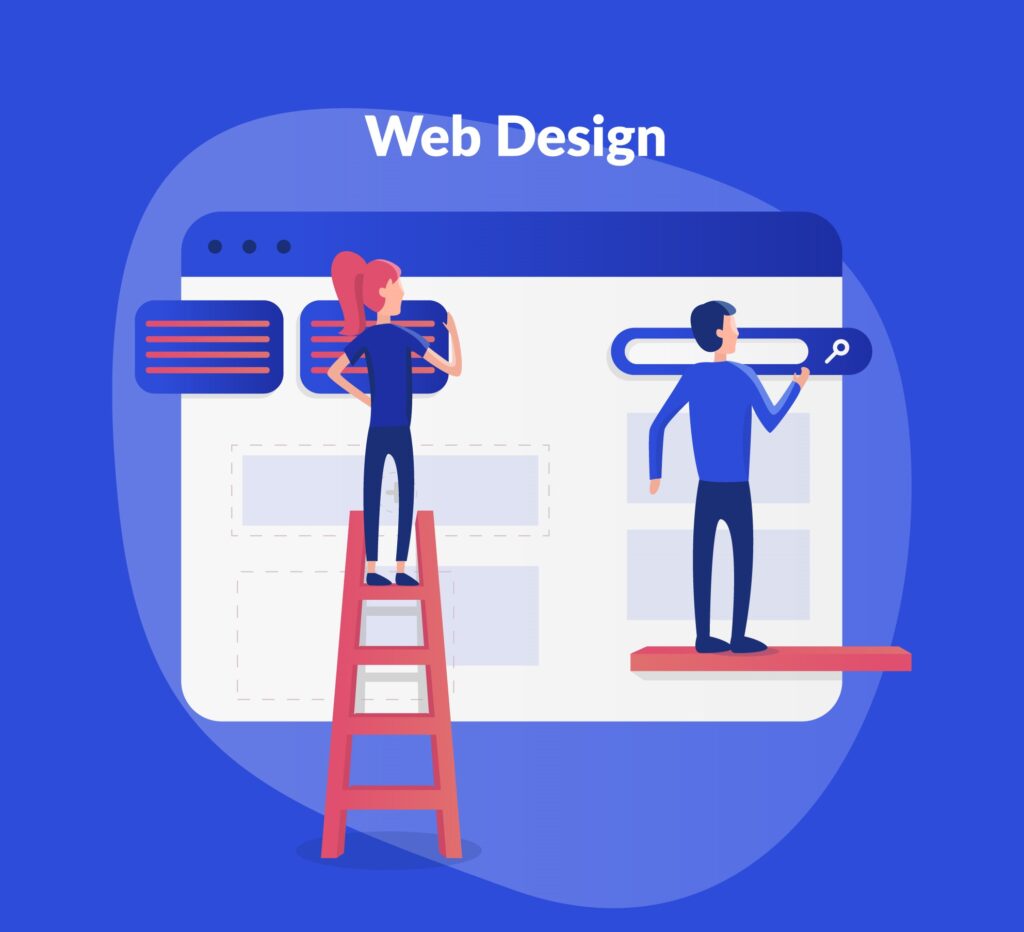
Since running a business may be a hectic and time-consuming activity in and of itself, many entrepreneurs may overlook the fact that their website is one of the most important components of their company. Once the website is up and running, it usually ends up at the very bottom of every business’s to-do list, despite the initial effort put into making it appropriate for the brand and appealing for people to interact with. Since at least 75% of consumers acknowledge that they rely their opinion of a company’s trustworthiness on the appearance of its website, research on consumer attitudes demonstrates the need of updating your website on a frequent basis. Regular website upgrades are among the most frequently asked questions at a marketing firm. Many business owners are hesitant to invest in updating their website’s technology and appearance since they might not immediately notice an increase in sales or revenue. Computer processing doubles every 18 months. This indicates that technology is developing at an alarming rate, and since sectors have extremely saturated marketplaces, it is crucial that your company makes every effort to stay up to date with the most recent advancements. While it’s crucial to make sure your brand and goods or services are accomplishing this, it’s as necessary to update your website frequently to demonstrate to both present and potential clients that your company is forward-thinking and creative. How do I know if my website needs updating? Realigning your website with your business aims and values is the most common reason for updating or redesigning it. This is typically accomplished by making minor adjustments to make sure your present website better serves your clients and your company’s mission and values. This is by no means the sole justification for updating your website; consider the following queries and see whether any of them relate to your company’s present state: If you answered yes to any of these questions then we’d say it’s pretty clear that you need an updated website! Do I need a refresh or redesign? A website update doesn’t have to involve completely revamping your site; it may be as easy as refreshing it with a few short updates and organizing it to make it easier to use. Without having to alter the general structure, you may update your website by making little adjustments that affect its visual appeal, such changing the fonts, upgrading your graphics, or frequently updating your content. It’s crucial to keep in mind that every website is a dynamic work in progress that will require multiple iterations to appropriately represent your business. As a result, you might be able to update your website multiple times over the course of a few years before looking to redesign it entirely at some point. When should i update my website A website redesign will take more time to finish and is a little more involved than a refresh. When redesigning a website, it’s common to make a total structural change or even move to a different platform, like Webflow from WordPress. Rebranding is another important reason to think about redesigning and building a new website. If your business has a new visual identity, it should be appropriately mirrored on all digital platforms, including your website. There is no one-size-fits-all solution when it comes to the question of whether and how frequently to renew your website. The frequency of website renewals and regular updates will vary depending on a number of factors, including the size of your business, the number of changes you make to your offerings, and technology advancements that could help your firm. When any of the following issues arise frequently when loading the website, that’s the best indicator that it’s time to update it: Our knowledgeable staff of designers and marketers at Dgazelle can assist you in determining whether and when your website needs to be updated. Our knowledgeable staff will collaborate with you to comprehend your company’s objectives so that we can provide adjustments that we believe will be essential and advantageous to your enterprise, incorporating the newest technological advancements and market trends. What to consider when updating your website Every business should be considering the following 6 things to decide if their website is due an upgrade: When last did you update your website “Has your website been updated in the last 5 years?” should be the first question your business asks itself. If the answer is no, you should think about redesigning your website instead of just making minor updates because it’s possible that your website isn’t giving both present and potential customers a user-friendly experience. We would advise updating or completely revamping your website every two to five years on average to keep it current and competitive. In the coming years, websites may require periodic refreshes and a complete redesign to remain current, given the rapid advancements in technology over the past ten years. Can you update your website in-house? Ensure that when you use an agency or company to build your website, you request access to the website to be able to make regular updates and changes to the content yourself. Having the ability to make your own website updates via a CMS is vital for important and timely announcements that your internal team can handle. If having access to the website yourself isn’t possible, you must make sure that the website developers you use to build the website are efficient and available to answer your questions promptly. Is your website mobile friendly? 4.3 billion people use mobile devices to access the internet, therefore having a mobile-friendly website is crucial. It is imperative that you have a mobile website that is fully responsive, easy to use, and has easily navigable buttons and readable, clear content. To be sure your customers can use your website without any problems, consider viewing it on your own mobile device before launching it. When testing the website, it’s important to check if users can simply navigate from page to page, discover the homepage,

